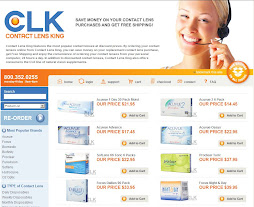Have you considered LASIK surgery to correct your vision only to find out you are not a good candidate for the procedure? Does the whole idea of elective surgery on your eyes give you pause? Let’s look at the viable contact lens alternative.
Why consider contacts when one of the reasons for having LASIK performed is to become free of lenses or eyeglasses? Because, in some cases, even successful LASIK recipients later need to be prescribed eyewear for the onset of presbyopia, the loss of near-focusing ability often associated with aging. Also, the time it takes for the corrected vision achieved by the laser procedure to stabilize can be somewhere between three and six months; and that vision is slightly less than perfect 90 % of the time for those with extreme prescriptions, falling within a range of 20/20 to 20/40. In these instances, a further procedure—known as enhancement—is called for. Unfortunately, there are some patients that cannot have this additional treatment if their cornea is too thin or other factors evolve resulting from the initial surgery. Contacts tend to give crisper vision and more immediate satisfaction at less risk.
Just as LASIK has advanced in the past decade, so have contacts. Some optometrists express amazement at how the field has progressed. New types of lenses, manufactured with materials that have improved comfort and convenience are prevalent. The introduction of silicone hydrogels, which allow more oxygen to permeate to the cornea, has extended contact wear time in some instances up to thirty days. For those who are able to tolerate overnight wear, these contacts approximate the same non-hassle ‘freedom’ that LASIK would give. It should be noted that proper care and commitment to a prescribed replacement regimen is still vital to avoid eye problems associated with lens use. As a contrast to extended or continual wear, daily disposables have seen a surge in favor among patients who like the handiness of just using their lenses once and discarding them at the end of the day.
LASIK can correct myopia (nearsightedness), hyperopia (farsightedness), and astigmatism (fuzzy vision due to an asymmetrical cornea). There is also a procedure for the aforementioned presbyopia. It involves the principle of monovision, where one eye (usually the dominant one) is corrected for distance vision and the other for near vision. Patients’ adaptability plays a large part in the success of monovision and many must be prepared for a loss in depth perception. Contacts are available to treat presbyopia in addition to all the above-listed conditions. For presbyopia there are lenses manufactured using a bifocal or a multi-focal design or one can also use regular lenses specifically fitted in monovision. As with LASIK recipients, monovision contact-wearers have the same concerns regarding adaptability and depth perception. Multi-focals provide a full depth of field, with a gradual transition between near and far powers in the same lens.
Other considerations in choosing contact lenses include not having to worry about aggravated dry-eyes, which can occur with LASIK, necessitating ongoing medication to facilitate tear production. With the laser procedure there is also the possibility that employment may be affected (some jobs prohibit employees who have undergone refractive surgery). Though uncommon, reports of postoperative symptoms that do not go away (double vision, heightened sensitivity to light, and vision loss due to dramatic corneal reshaping) exist. Night driving vision performance has been diminished in a number of LASIK patients--especially those with myopia--due to glare, ‘starbursts’ and halos seen around lights.
So, the benefits of contact lens wear as an alternative to LASIK are well worth weighing. Of course any final decision can only be determined, as always, after a thorough discussion with your eye care professional.
Thursday, September 17, 2009
Subscribe to:
Post Comments (Atom)





No comments:
Post a Comment